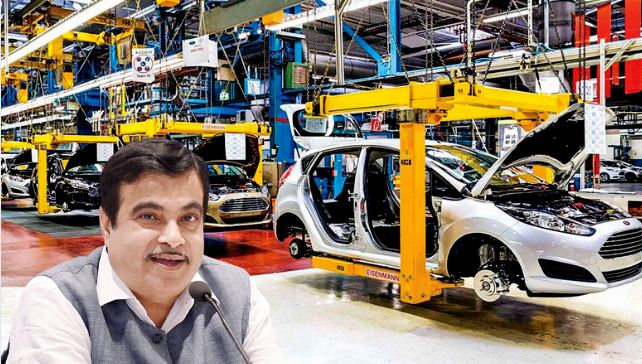- India is the world’s fourth-largest automobile market currently, with around 3 lakh crore rupees of exports and 4.5 lakh crore rupees of domestic consumption.
- When it comes to growth in the automobile market, it is expected to be among the highest in the world given the emerging middle class and post-pandemic utility of personal vehicles.
- According to Gadkari, the growth will be driven by export.
India is the world’s fourth-largest automobile market currently, with around 3 lakh crore rupees of exports and 4.5 lakh crore rupees of domestic consumption. The country currently manufactures 26 mn vehicles including Passenger Vehicles, Commercial Vehicles, Three Wheelers, Two Wheelers, and quadricycles in April-March 2020, of which 4.7 mn are exported. India holds a strong position in the international heavy vehicles arena as it is the largest tractor manufacturer, second-largest bus manufacturer and third largest heavy trucks manufacturer in the world.
When it comes to growth in the automobile market, it is expected to be among the highest in the world given the emerging middle class and post-pandemic utility of personal vehicles. Union minister Nitin Gadkari, who was in Noida to inaugurate a vehicle scrapping and recycling unit, said that the government aims to double the size of the automobile market by 2026 to 15 lakh crore rupees.
According to Gadkari, the growth will be driven by exports because thanks to the scrappage policy, raw materials would get cheaper in India, making Indian exports more competitive in the international markets.
“The scrappage policy, launched by the government, will make Indian automobile sector more competitive in the international market as all key raw metals will eventually get recycled. This will consequently bring down material costs. Cost of raw materials like steel, copper, aluminium, plastic and rubber, among others will come down. Recycling will also bring down our imports. This will also help in achieving our the government’s goal of Aatmanirbhar Bharat,” said Gadkari.
Given the growth prospects of India and the increasing competitiveness of Indian manufacturing, companies like General Motors (which was present in India under its Chevrolet brand), Ford, Fiat, which left the lucrative market, are set to suffer. A few two-wheeler companies like UM Motorcycle, Harley Davidson, which left the market would also suffer given the fact that re-entry into the market would not be easy. The four-wheeler and two-wheeler companies which have already established themselves in the Indian market are the ones that are set to benefit from lower production costs and higher sales.
Gadkari said that the vehicle scrappage policy has the potential to bring down the cost of manufacturing by up to 33 percent and boost auto sales by 12 percent. The government now expects to get Rs 10,000 crore additional investment in the scrapping and recycling sector.
“Within next two years, I am confident that there will be 200-300 new scrapping and recycling facilities in India. Our aim is to develop 3-4 such centres in every district. This will not only create 200,000 jobs, but will also generate up to Rs 40,000 crore additional GST (goods and services tax) collection from vehicle sales,” he said.
From rising sales of electric vehicles to the decline of the dominance of Maruti Suzuki and the rise in sales of Hector, Tata, and Mahindra, the Indian automobile market is going through a significant churn in the post-pandemic era.
In the post-Corona world, the customers seem to be preferring quality cars over the same-old boring cars being churned by the old-market players like Maruti Suzuki. KIA Seltos and MG Hector rose up on the ladder to make a place among the top-selling car models within months of their launch. The change is so fast that Maruti Suzuki, which had above 50 percent market share in the first half of FY 20, went down by more than 2 per cent in just one year with a 48.5 per cent market in the same period in FY 21.
Tata, KIA Motors, and MG Hector are increasing their market share while Maruti Suzuki and Hyundai’s market share is moving southwards. The companies like Maruti Suzuki and Hyundai have made cars an assembly line product with very little focus on the enhancement of consumer experience, and this is leading to the detachment of consumers from their cars.
Moreover, the market share of SUVs has increased in the last few years and is expected to move northwards in the coming years because the consumers do not mind spending a few lakhs extra for a better experience, and Maruti Suzuki has not been able to make its mark in the SUV space.
The ongoing churn in the Indian market makes it an interesting place to be for the companies, but the ones which sought exit in the last few years would obviously not be able to make a quick comeback.
